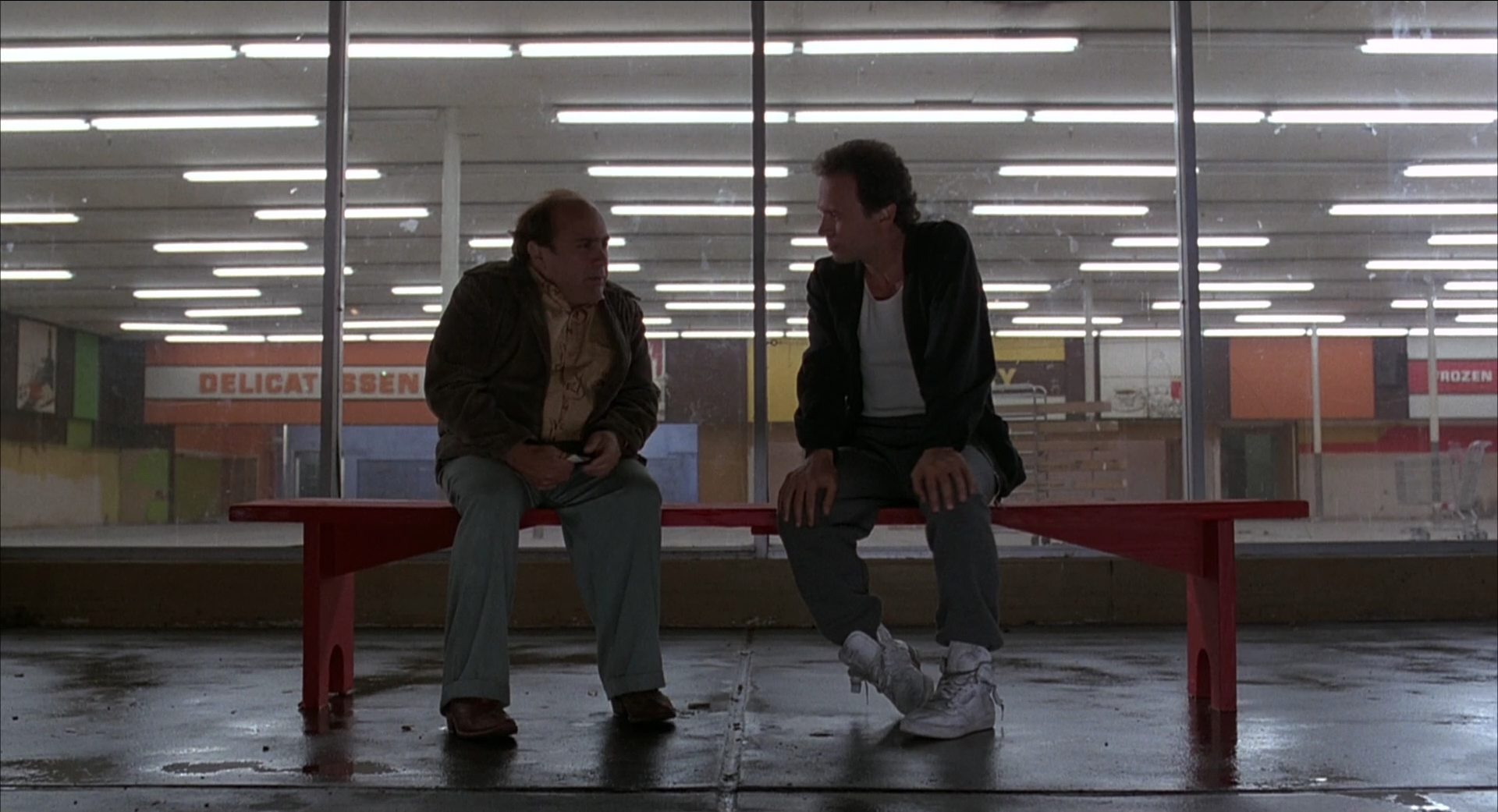
BETTER THAN
HiTCHCOCK
c.a. funderburg
It’s the sinister little secret of The Pink Smoke that we don’t much care for Alfred “Young and Innocent” Hitchcock. And while we certainly have zilch-o interest in debating the merits of a filmmaker that everyone can agree is “the greatest of all-time and you’d have to be some sort of malcontented and willful iconoclast to disagree,” we are interested in a strange phenomenon: while we don’t adore the man himself, we have a tendency to love Hitchcock knock-offs.
From William Castle’s lazy copy-catting to Francois Truffaut’s loving pastiches, there’s a chance that if a film shamelessly apes the master of suspense, we’re really going to enjoy it. Brian DePalma, Jonathan Demme, Stanely Donen; the list of great filmmakers who tried their hand at a Hitchcockian shtick is extensive and hugely appealing to explore – and honestly, we’ll take either “French Hitchcock” over the real thing any day, whether you consider the mantle to rightfully belong to H.G. Clouzot or Claude Chabrol.
In this series, we’ll look at parodies, assiduous imitators, and off-brand “Hitchcock-like Film Product” in order to dig into just what it is that we love so much about these movies. Sure, you’ll blanche at the suggestion,* but we think these films are Better Than Hitchcock.
previous entries in the series:
{THE BRiDE WORE BLACK}
{HiGH ANXiETY}
{MASQUES}
{LES DiABOLiQUES}
{PEEPiNG TOM}
{PASSiON}
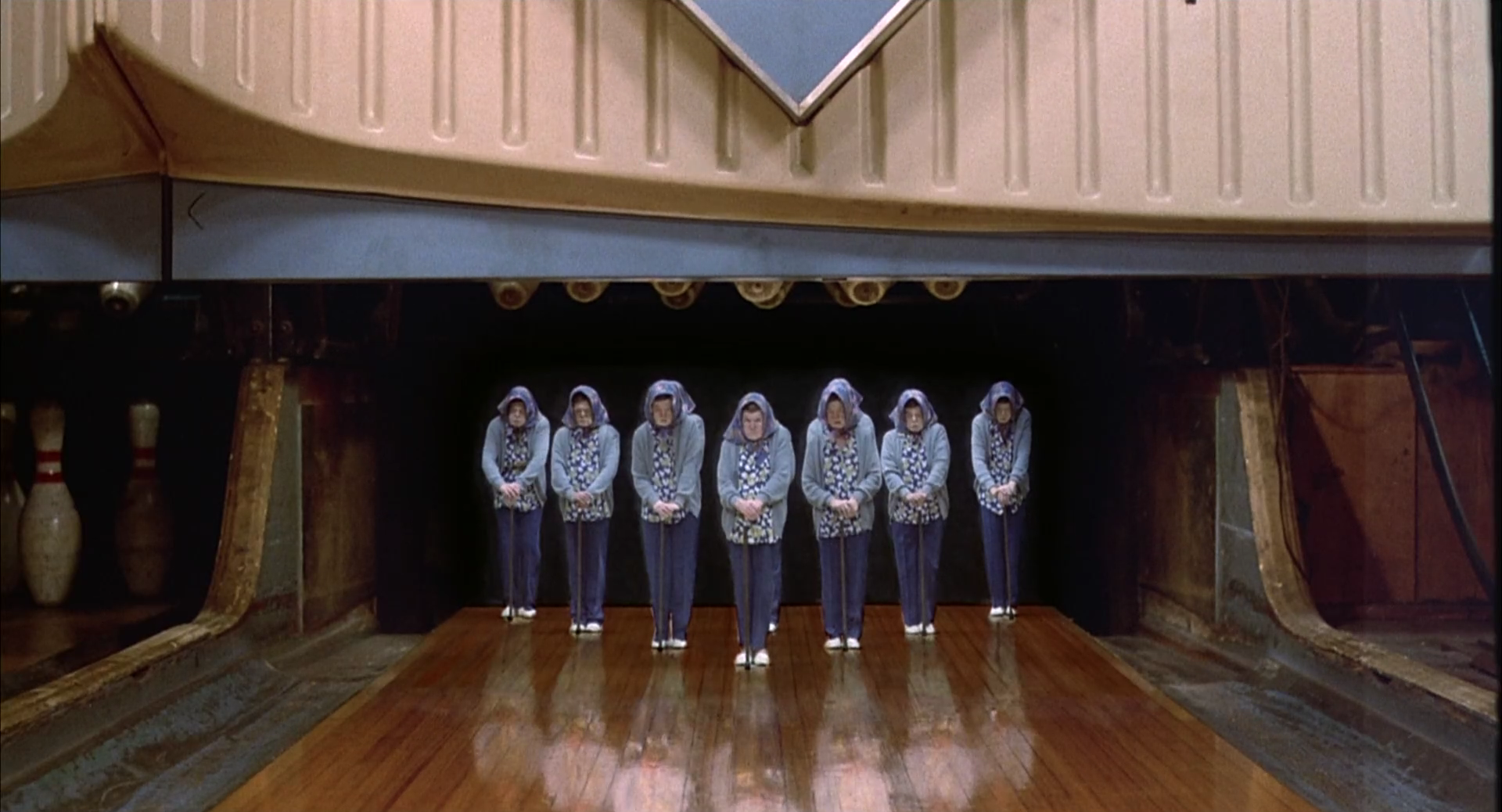
THROW MOMMA FROM
THE TRAiN
danny devito, 1987.
"It frequently happens in my books that what I can do in the way of words to show the internal workings of a person’s mind cannot be done in film.” ~ Patricia Highsmith
Did Patricia Highsmith see Throw Momma from the Train? It’s irresistible to imagine the notoriously dyspeptic and mean-spirited author of Strangers on a Train dragging herself at age 66 to a movie theater in the Italian part of Switzerland to watch Danny DeVito’s travesty of her 1950 debut novel. Viewing that kind of a quintessentially lunk-headed and loud American film in such a delicately European enclave as Locarno has a kind of absurdity on its own, but the idea of Highsmith watching her career come full circle a few years before the end of her life (with that film; in that setting) has a compellingly strange ridiculousness to it.1
Picture the greatest writer of crime fiction, unquestionably the greatest English-language writer of crime fiction, watching a goofball reimagining of the acidic work that birthed her career; a big-time blockbuster 80s comedy starring the guy whose specialty was playing Sammy Davis, Jr. in blackface and caricatures of homosexual feyness. If she did see it, though, it’s not hard to imagine her thinking that DeVito understood her story better than Alfred Hitchcock’s beloved skim milk version. There’s a humane nastiness to both Highsmith’s novel and DeVito’s film that sets them apart from Hitchcock’s strictly “for entertainment purposes” adaptation.
Throw Momma from the Train is not a direct adaptation of Strangers on a Train, neither Hitchcock’s film nor Highsmith’s novel. DeVito’s film in fact references Hitchcock’s movie throughout, a repertory screening of the 1951 thriller gets Momma’s plot rolling in earnest. In the book and the Hitchcock adaptation of Strangers, an upright young man meets a strange effete type on a cross-country train-ride. After discussing their respective hatreds of their father and ex-wife, the moneyed weirdo suggests they trade murders (“crisscross”) to evade detection. The upright young man blows off the morbid suggestion but the overtly amoral crisscross enthusiast goes ahead and kills the young man’s troublesome ex-wife anyway.
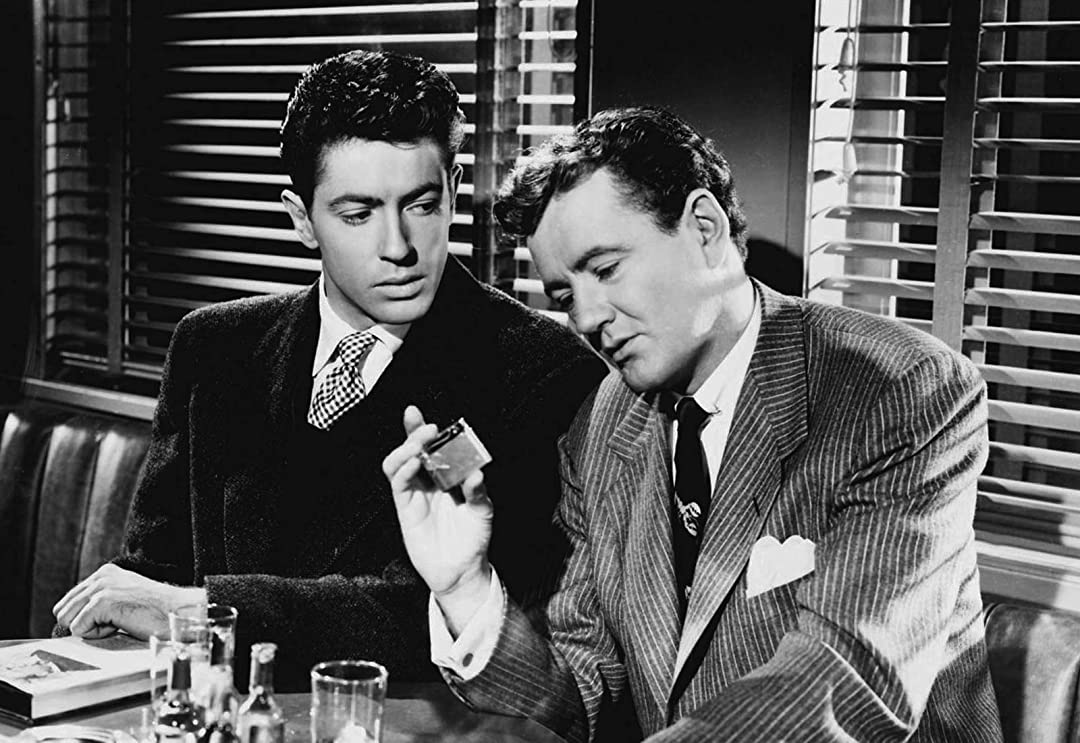
Momma distorts the plot slightly to have it be a writer teaching an adult education class suggest to one of his least-promising students (though all of his students are unpromising) that the struggling would-be writer should watch Hitchcock’s film to better understand the concept of criminal motivation. The adult ed student (played by DeVito himself) gets the idea that what the writer (Billy Crystal) actually was trying to communicate wasn’t writing advice, but a coded signal to live out the movie: the student will kill the teacher’s infuriatingly successful ex-wife and pay the student back by killing his abrasive mother.
It’s telling that the writing teacher doesn’t suggest that this aspiring novelist read Highsmith’s novel, but just as it’s delightfully jarring to imagine Highsmith watching Momma, it’s difficult to imagine screenwriter Stu Silver having read the book. A hack’s hack, Silver’s only meaningful feature film credit is Momma, the rest of his body of work is a graveyard of awful 80s sitcoms: Bosom Buddies, The New Odd Couple, Webster, It’s a Living.
He also wrote the notorious gay conversion comedy series Brothers (the kind of faux-progressive comedy nevertheless dependent on homosexuality being a punchline that Hollywood celebrates itself for having bravely put forth) and the less notorious, never-aired late 90s Blues Brothers animated series. The obvious Momma connection is that he wrote for Susan Harris’ Soap, the show which made Billy Crystal’s openly gay character Jodie Dallas a bit of a pop phenomenon. Silver wrote Dallas’ celebrated family court appearance and from then on had professional associations with Crystal, though the actor was purportedly not the first choice for the writing teacher in Momma.
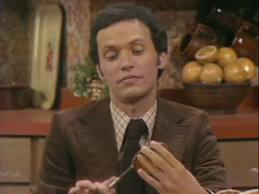
Silver’s work evinced a willingness to touch on controversial subjects which helps makes sense of the unnecessary scene in Momma in which Rob Reiner plays a borderline offensive gay caricature where, as with Brothers and Soap, part of the joke is unquestionably “ha ha he’s gay! just look at him! he’s gay!”2 but with just the hint of the incongruous chaser of “you uptights in the audience need to get over it! it’s perfectly normal to be a hilarious flouncing gay caricature!”
It’s hard to say why Silver wrote Momma, though both his script for the film and Soap have a real affection of the word “slut” - the repeated, insistent use of which got the sitcom into trouble with ABC’s Broadcast Standards and Practices department while its harsh, tone-deaf use as a recurring punchline in Momma has aged just about as poorly as a joke can age.
Interviews with Silver are few and far between - most reasonably focus on his far more culturally notable work on Soap. Speculating on his motivation is probably better left to the movie cops but I don’t think we can rule out some kind of a “crisscross” type deal with a real screenwriter, one who hated his mom and wanted to slander her in celluloid without getting caught.
Whatever the inception, as with Hitchcock’s film, the director ended up being the driving force of the film - Throw Momma from the Train unquestionably aligns with DeVito’s complicated comic sensibility, though he receives great support from Anne Ramsey as the awful mother, Kate Mulgrew as the awful ex-wife, Annie Ross as an awful writing student and Jackass affiliate/cinematographer Barry Sonnenfeld coming off of his work on Blood Simple and Raising Arizona.
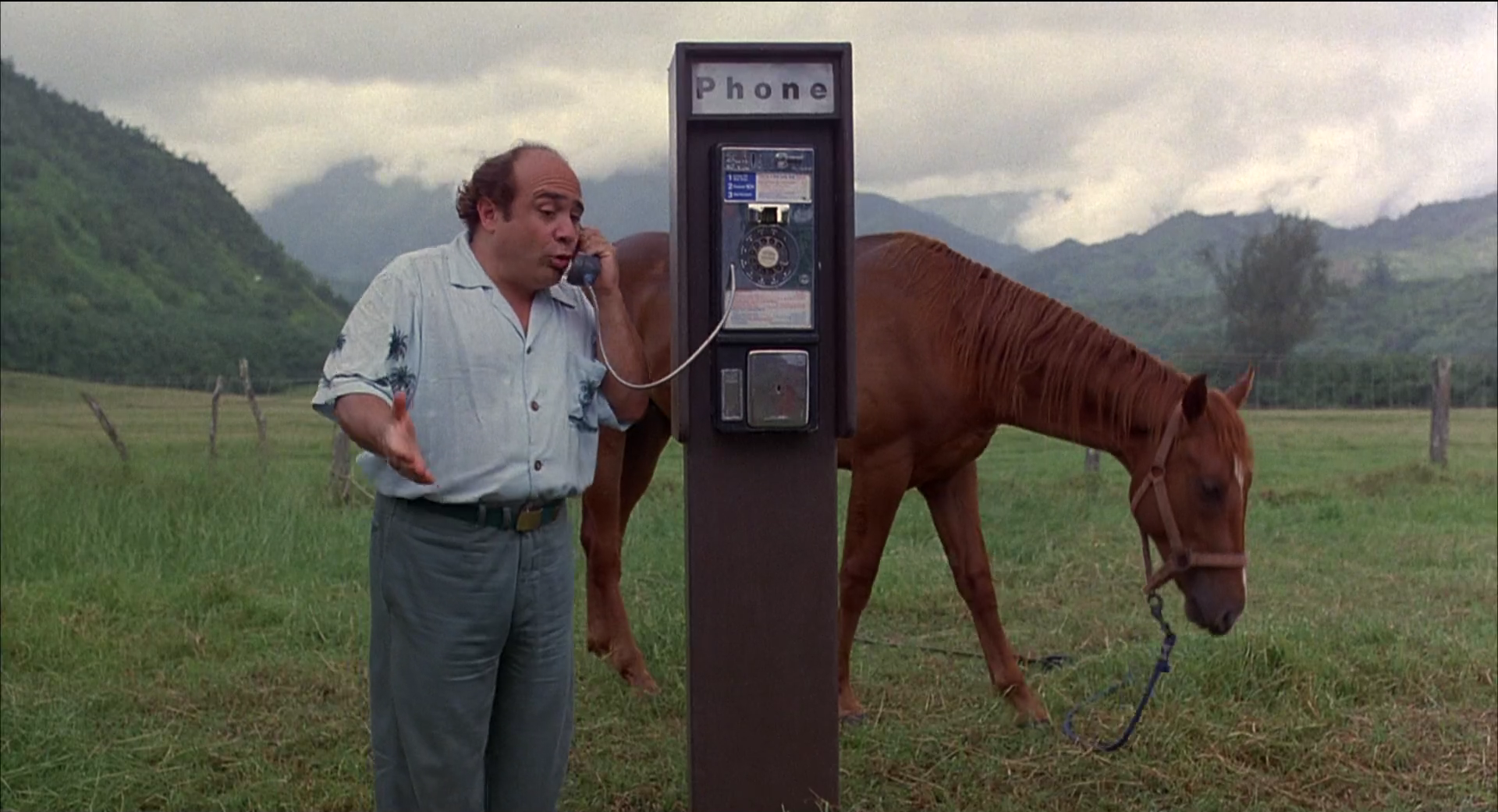
Hitchcock’s creative support structure was built not only a foundation of Highsmith but included the writer of the most enduring detective fiction of the 20th century. Raymond Chandler, author of The Big Sleep and The Long Goodbye, was brought in as one of the screenwriters on Hitchcock’s adaptation and he detested the resultant film. The phrase I used, “skim milk,” comes from Chandler’s heated letter to The Master of Suspense that laid out why he didn’t care whether he was given a final credit on the film or not:
“Regardless of whether or not my name appears on the screen among the credits, I’m not afraid that anybody will think I wrote this stuff. They’ll know damn well I didn’t. I shouldn’t have minded in the least if you had produced a better script — believe me. I shouldn’t. But if you wanted something written in skim milk, why on earth did you bother to come to me in the first place? What a waste of money! What a waste of time! It’s no answer to say that I was well paid. Nobody can be adequately paid for wasting his time.”
Chandler and Highsmith were central figures in the mid-century renovation of crime fiction that rebuilt the genre on psychology instead of engineering the most clever and surprising plots the author could think up. A thumbnail view of it sees authors like Chandler and Highsmith as rejiggering the form away from the plot-heavy locked-room mysteries of Agatha Christie while giving an existential dimension to the hard-boiled brutality of Dashiell Hammett.
In Highsmith’s case, this meant a total disinterest in standard plot structures and emphasis on psychological interiority; what happens inside of a killer not the machinations of their crime story. It’s impossible to imagine a Christie or Hammett novel drained of their plots (it would be an empty cistern) while Highsmith’s primary artistic process was dredging up the psychological truth concealed by the murky waters of story. What a murderer does is less important in a Highsmith novel than why a murderer does it - or maybe more accurately: her focus is on what it means to be psychologically abnormal, criminally insane.
But Highsmith and Chandler’s ideas about art weren’t universally embraced. Like all interesting artists, they were engaged in an active fight resisted by large portions of the artistic and critical establishment; as a result Highsmith and Chandler had a tendency to get heated, to get strident, about what they believed in. Chandler was more of a full-bore head-on insults kinda guy (as shown in his letter to Hitchcock), Highsmith preferred a dry, withering dismissiveness in her musings on the subject of crime-writing.3
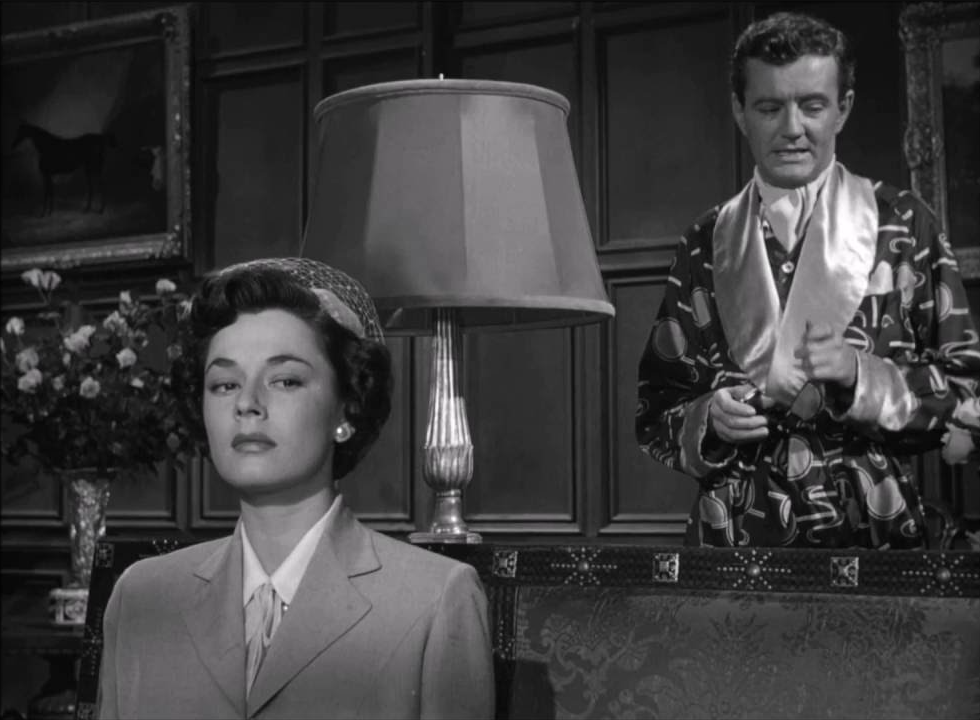
Though she was always perfectly polite about Hitchcock’s film, she disliked the changes it made to the main character and the casting of his love interest. In a 1988 interview for Sight and Sound Magazine she said, "I thought it was ludicrous that he's aspiring to be a politician, and that he's supposed to be in love with that stone angel." In the novel, Guy Haines is an architect instead of a professional tennis player and his soon-to-be fiancée Anne isn’t a total cypher like Ruth Roman’s negligible role. (In the film, he’s played blandly by the remarkably handsome and otherwise unremarkable Farley Granger.)
Highsmith was more complimentary of Robert Walker as Bruno (“Charly Bruno” in the book and, in a classic gesture of inexplicable Hollywood adaptulary process, “Bruno Antony” in the film) who remains queasily gay-coded in the film: "He was excellent. He had elegance and humor, and the proper fondness for his mother." I would say the Bruno of the novel has virtually no elegance (apart from the cheap, meaningless elegance of expensive clothes and fancy liquor) and his humor is brutal and cutting in contrast to Walker’s twinkling eyes and wry smiles.
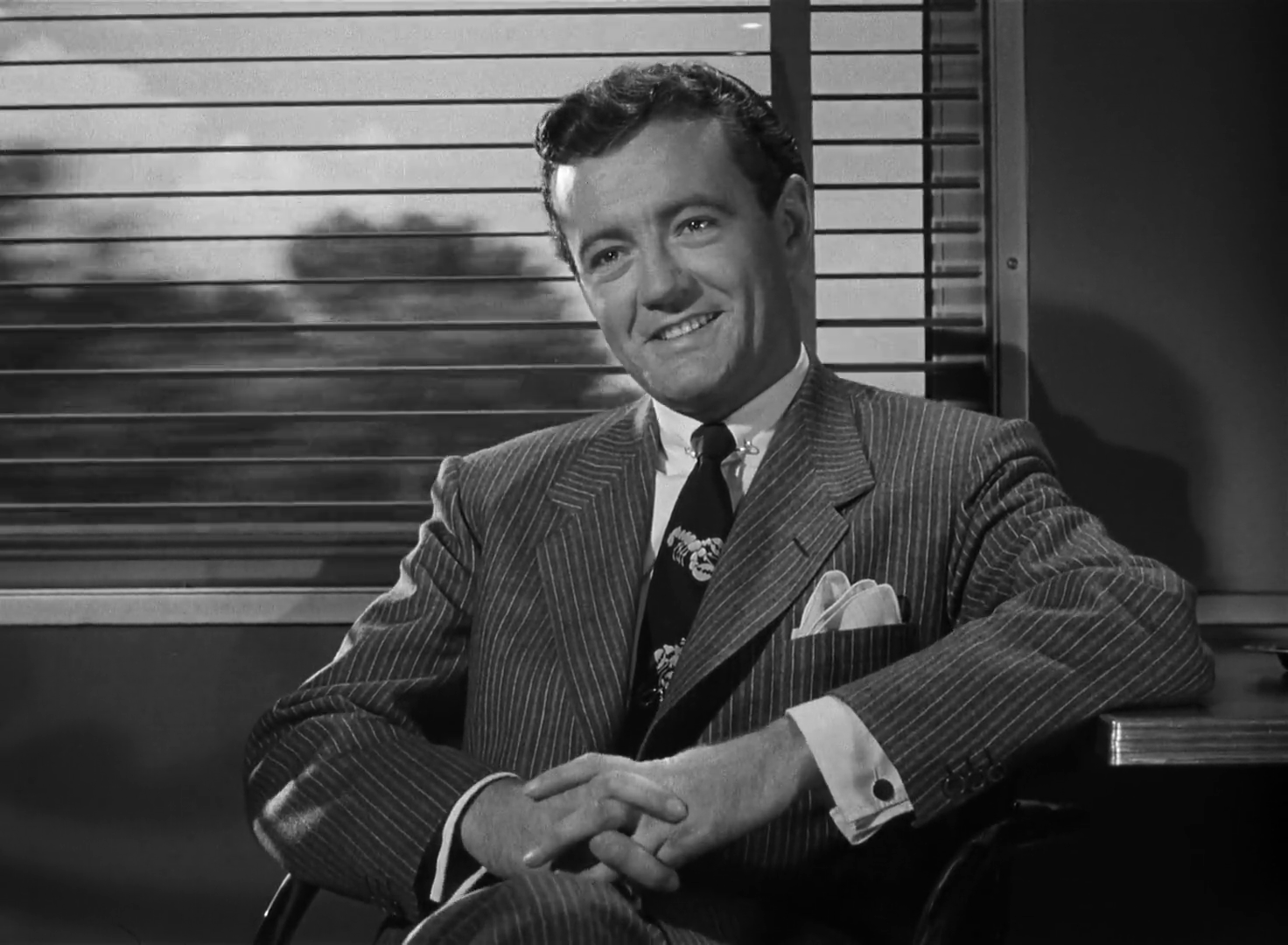
The novel’s Bruno is brusque and easily wounded; Walker’s character is fey and emotionally calculating. The Bruno of the film delights in his convoluted criminal activities, the Bruno of the novel suffers from an implacable unhappiness, forever sinking down into the quicksand of his own heart. Highsmith’s Bruno is fundamentally miserable; he makes everyone around him uncomfortable, unhappy, regretful. Hitchcock reimagines the character as “devilish” - a kind of boyish, almost charming, evil. This is, of course, a very standard Hollywood approach to villainy: the bad guy who is having such a good time that we can’t help being a little bit taken in by him.
The main difference in the philosophy of Strangers on a Train the novel and Strangers on a Train the film is encapsulated in a brief moment shared between Bruno and a small child at a fairground. Bruno has followed Guy’s detestable wife Miriam to an amusement park and stalks her, ready to carry out his half of the “crisscross” murder plot. In the film, as a child passes carrying a balloon, an annoyed Bruno pops the balloon with his cigarette and smirks (Walker does a lot of smirking in the film.) He’s evil, ya get it? Revels in the misery of children. he’s. just. evil.
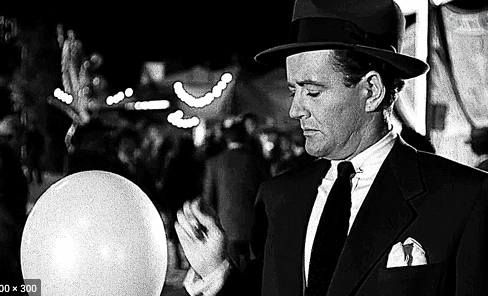
In the novel, he interacts twice with children at the fairground. He buys a “swallowtailed bird” balloon and it makes him “feel like a kid again.” A moment later: “A little boy walking by with his parents stretched his hand toward it, and Bruno had an impulse to give it to him, but he didn’t.” After he’s strangled Miriam to death and he makes his escape, he sits down on a bus near another child: “In a burst of well-being, he ruffled the little boy’s hair. The little boy was taken aback for a moment, then in response to Bruno’s friendly grin, he smiled, too.”
Hitchcock’s film is a reduction of the character to pure malice, an attempt to amplify his evil in the cheapest possible way - one could call it a reactionary approach to morality, one that exists mainly to stoke an audience’s fear and get them rooting against The Bad Guy. Simultaneously, the film also stokes the audience’s enjoyment of his morally liberated antics.4 The balloon popping is a gesture intended to turn Bruno into an object of fun around which an entertainment can be built: reduce his moral complexity in order to fuel a simple Good Guy versus Bad Guy narrative, add bit of W.C. Fields anti-kid humor, give the audience a bit of fun mean-spiritedness before a neatly-resolved story puts the monster back in the box. It makes the character weightless: true evil so uncomplicated that it becomes good clean fun.
But that’s not what Highsmith is after. She’s not trying to amplify Bruno’s evil at every turn and make an entertaining game of his deranged focus on Guy Haines. The heaviest antagonist in novel, the one that carries the most weight is Haines’ awful ex-wife. She’s pregnant by another man, won’t grant Guy a divorce and once he lands a prestigious commission in Palm Springs she decides she won’t ever consent to a divorce unless he pretends the baby is his and allows her to spend the rest of the year with him on an extended beach vacation as he works on the project.
She’s unreasonable and Guy can never tell if she gets off on twisting him into knots of misery, if she’s delighting in doing everything she can to ruin his career and relationship with Anne, or if she’s just so bottomlessly selfish that she’s incapable of considering her actions in terms other than what might be most enjoyable to her in any given moment. In Hitchcock’s film, she’s not much of a character. She seems ok. It would be hard to describe her beyond, “she wears coke-bottle glasses.” In the book, there’s a diabolical cruelty to her, trap of narcissism and self-regard in which Guy’s thrashing only tears him further apart.
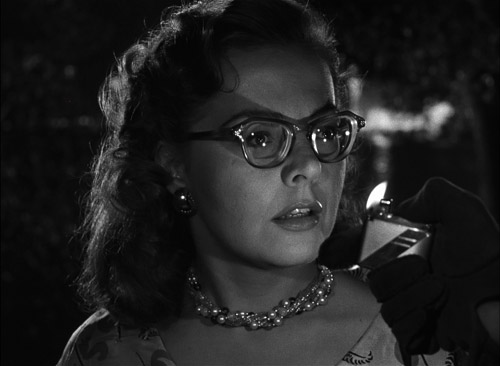
In the movie, there’s scarcely any motivation for Bruno to murder Miriam and pursue Guy beyond the inveterate Bad Guy-ness established by popping an innocent kid’s balloon. Hitchcock’s film seems to say, “He’s evil, whattayawannaknow? Look at him, he’s fruity!” As with so many of Hitchcock’s films (from Psycho to Rope to North by Northwest) gay-coding is used as a shorthand to turn the audience against a character. Homosexuality exists as little more in a Hitchcock film than something to turn the audience off, to gross them out, to make them root against a guy - it’s another popped balloon. Hitchcock tells us over and over: “The guy’s a psycho. Ya know - like most queer people.”
Despite being a lesbian, Highsmith herself dealt her entire career with charges of homophobia - mainly because she created characters like Bruno and Tom Ripley who are gay-coded and criminally depraved.5 But that reminds me of the charges of misogyny that Rainer Werner Fassbiner was called to account for his entire life. Asked repeatedly why he portrayed woman so negatively in his films,6 Fassbinder explained that women allowed him to explore how societal constructs create human misery:
“I find women more interesting. They don’t interest me because they’re oppressed - it’s not that simple. The societal conflicts in women are more interesting because on the one hand women are oppressed, but in my opinion they also provoke this oppression as a result of their position in society and in turn use it as a terror tactic. They’re the really interesting figures in society; in them the conflicts are clearer.” (From a 1974 conversation with Kraft Wetzel.)
For Highsmith, gay men illustrate these conflicts clearly, though I think her interests are moral rather than societal - unlike Fassbinder, she’s an heir of Dostoevsky, not Bertolt Brecht. Fassbinder and Highsmith are interested in different mechanisms by which suffering can fixed in place but they have the same fundamental observation: an implacable desire to be released from suffering creates more suffering. (It’s interesting to see that even 45 years ago at the time of Fassbinder’s interview it was taboo to suggest that the oppressed play any role in their own suffering or that they perpetuate suffering outside of themselves.)
In any case, Charly Bruno is gay and detestable, not because it is simply detestable to be gay (as Hitchcock’s film posits) but because he has been warped and ruined by a set of desires that can never express themselves. On top of that: his wealthy, pampered existence can give him everything he wants except for the frustrated desires that define him. But Highsmith refuses to see his story as a tragedy that lets him off the hook, she sees him for the grotesque criminal he is: it is a specifically novelistic understanding of Bruno, one neither sympathetic nor unsympathetic, a character written only to be as psychologically truthful as possible; her only concern is the truth of Charly Bruno.
Highsmith’s book is built around her sincere interest in a line that comes a little before the midway point of the novel. Though written in the third person, the question comes after a paragraph in which Bruno is reflecting on his situation; it’s a question Bruno seems to be asking himself of his relationship to Guy. “But what did Bruno want with him?” Hitchcock absolutely does not care about the answer to this question: Bruno exists in his film as an evil to be set against righteousness7 and subsequently vanquished. Highsmith wants to understand what it means to be Bruno, in a way he can't even understand himself. In her novel, it might be true that Guy exists as a character to be understood (and misunderstood) by Bruno.
This is where Throw Momma from the Train’s spiritual resemblance to Highsmith’s novel comes into play. Owen Lift, the hapless writing student with the monstrous mother, isn’t the villain of the film. He doesn’t pop any children’s balloons - even when Owen is peeping on Crystal’s Larry Donner and his girlfriend as they make-out on a kiddie train, there’s a dim-witted innocence to DeVito’s character. Like the novel’s Guy Haines, he’s trapped in an intractable relationship to someone utterly repellent, trapped inextricably with someone who degrades his humanity. There’s no hope where Miriam is concerned and no hope where Momma is concerned.
Bruno is consciously driven by a hatred of his parent and a need to be friends with Guy (his lonely homosexual desires are sublimated). That’s Owen, minus the homosexual desire (Owen is basically sexless.) Momma understands that the loneliness of the crisscrosser and his fixation on a friendship with his unwilling accomplice is what sets the narrative - Hitchcock’s Bruno has no actual interest in a friendship whereas a wounded belief in their friendship drives Highsmith and DeVito’s undeterrable schemers.
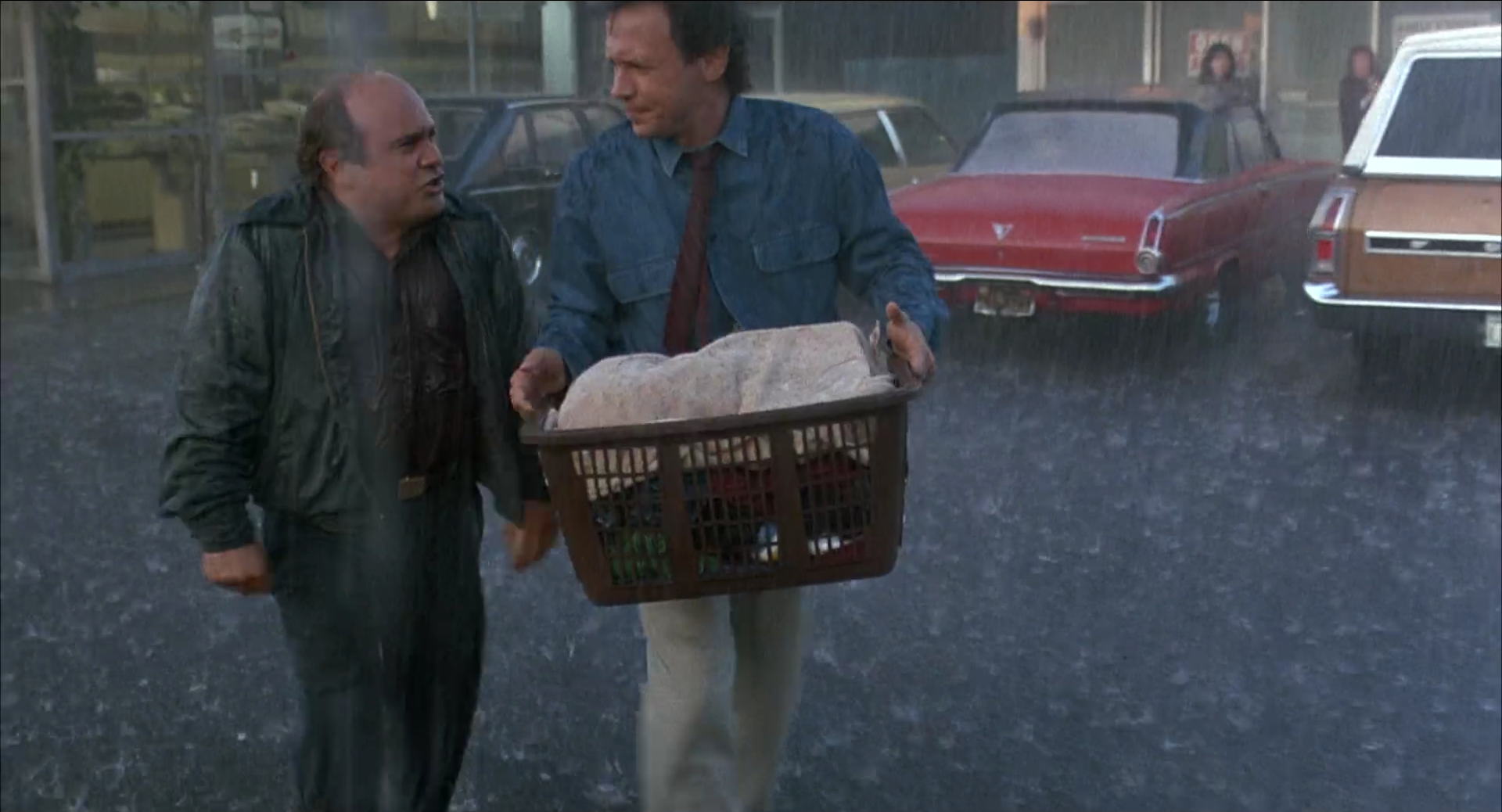
There are two remarkable scenes in the film, both focused on Owen. The first is a fantasy sequence in which Owen imagines murdering his mother by jamming a pair of scissors in her earhole after she berates him (“You’re gonna be nothin’! All you do is type like a fat little pigeon!”) - the horror of the idea is undercut by the Looney Tunes-ish depiction of the attack and Momma’s reaction. What makes the scene remarkable is that the spell of the fantasy is broken by Momma suddenly taking Owen sweetly in her arms and doting on him, “I don’t know what I’d do without you. Owen’s my little baby, Owen’s my little baby boy.”
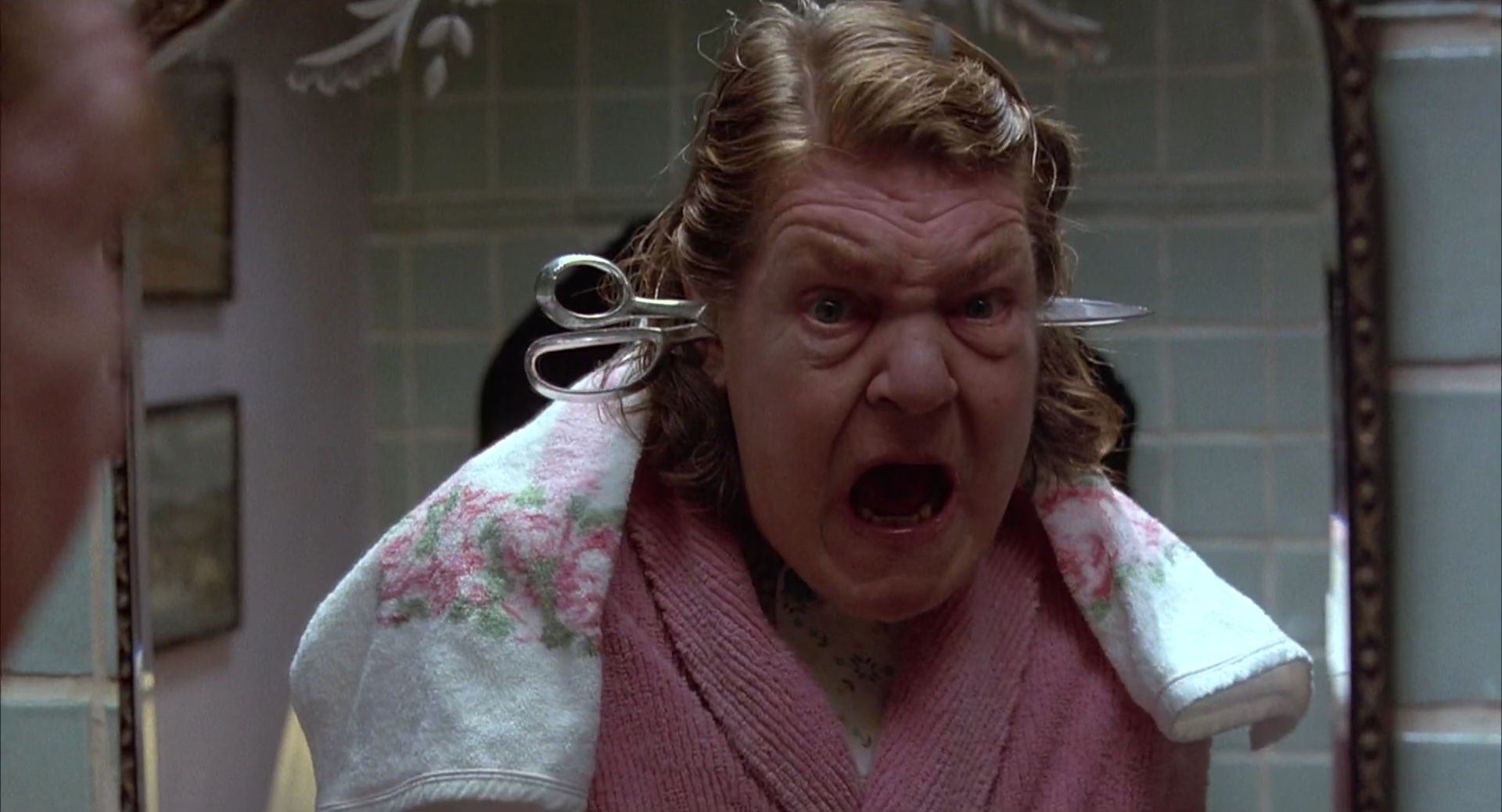
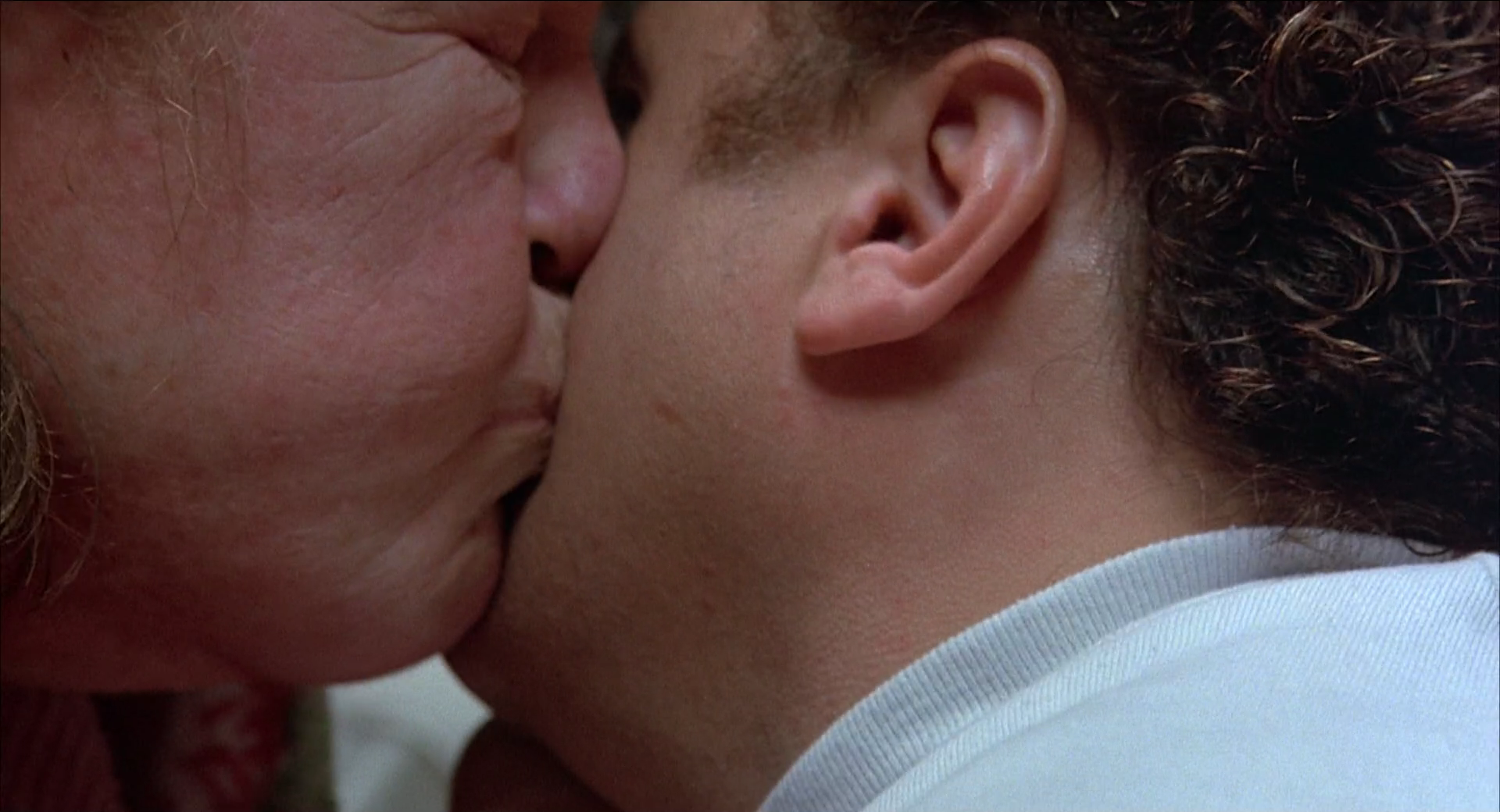
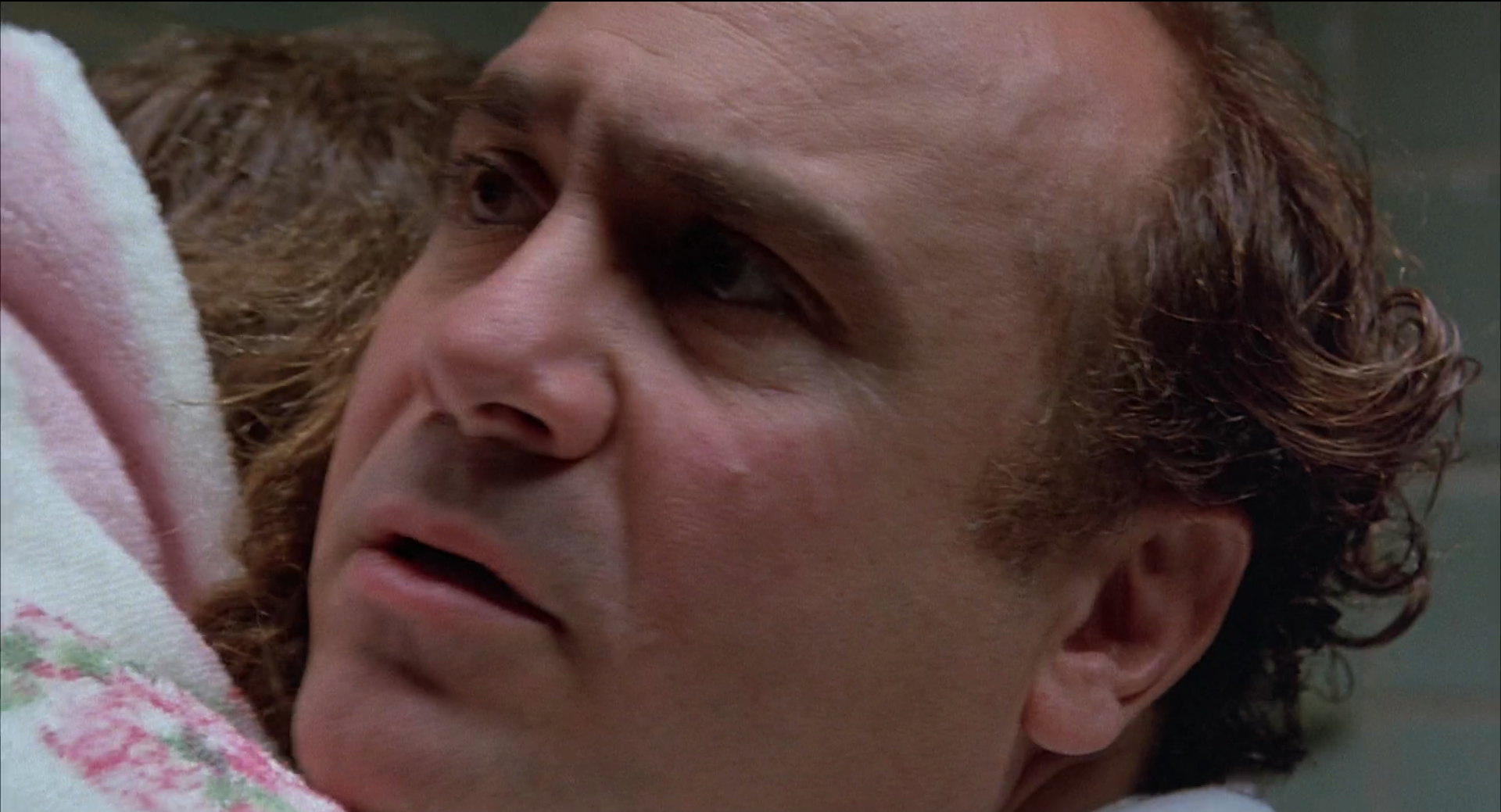
The switch from relentless, repulsive verbal abuse to maternal sweetness is so intense that there’s no way to feel about Owen’s situation other than that it’s hopeless. He’s both comprehensible in his fantasies of murdering his mom and completely unable to disengage from her as a human being, as his mother. Just as Highsmith’s Guy is hopelessly bound to his ex-wife Miriam, Owen is hopelessly bound to his mother - murder is only a fantasy solution and completely at odds with the reality. There’s no question murder won’t solve their problems. Both works are shrewd enough to allow the murder-fantasy to fully bloom only to snip it off at the stalk.
The second remarkable scene illustrates Owen’s loneliness. He insists on showing an utterly disinterested Larry his coin collection (hidden in a small box under the floorboards.) The joke starts out like this: the secretively stashed collection features a regular dime, a regular quarter, a regular nickel, etc. No special value, no notable pressings. But Owen explains: “This one here, I got in change when my dad took me to see Peter, Paul & Mary.” He goes on to talk about how all of the coins have special meanings associated with happy moments with his now-deceased father.
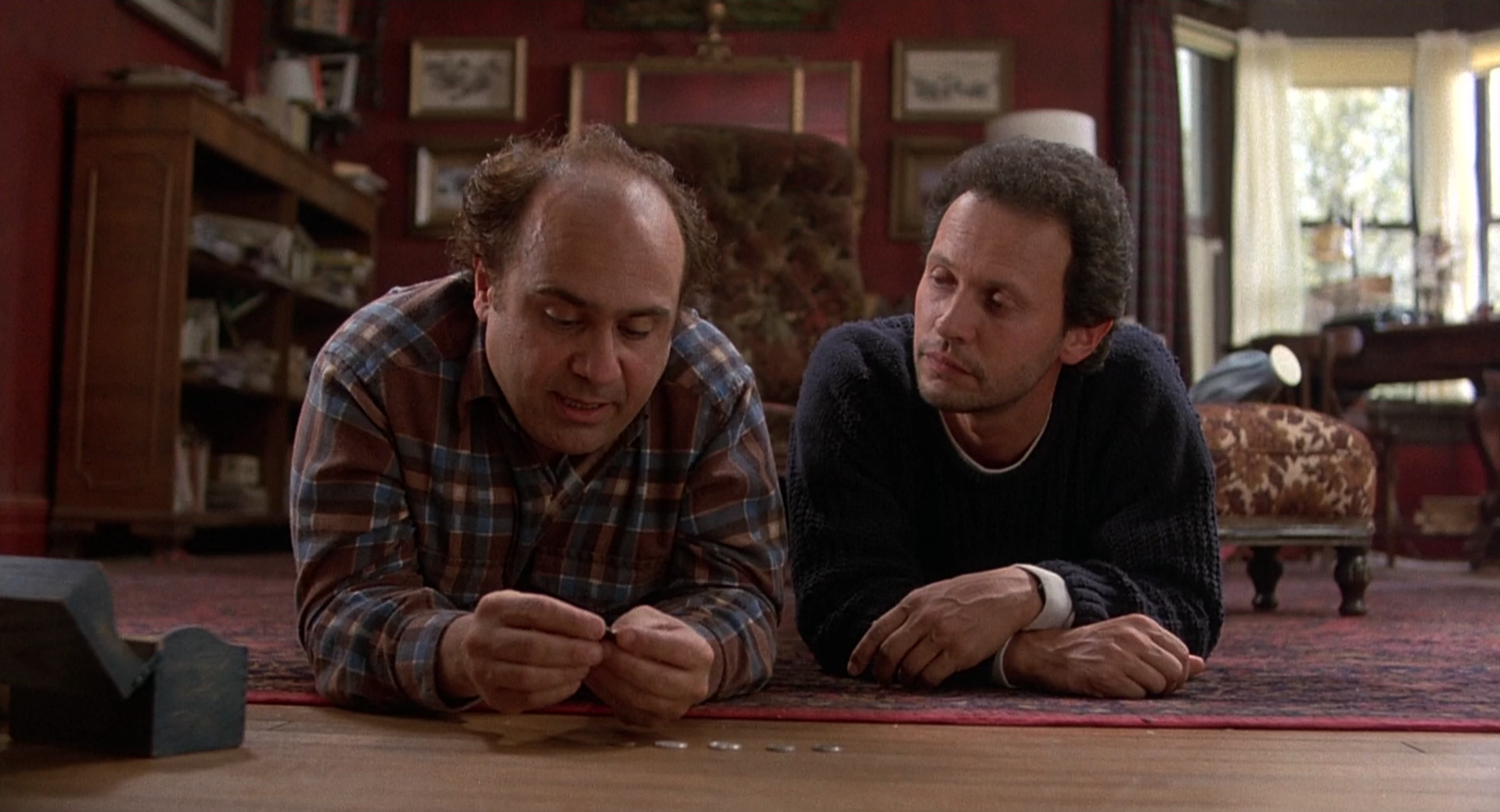
The scene sets up the coin collection as another moment of Owen’s dim-witted misunderstanding of the world: a closely guarded coin collection comprised of utterly commonplace coins. But it develops to reveal Owen’s profound loneliness since the loss of his father, his helplessness as a grown man trapped in a broken family, plagued by family bonds that are both his happiest memories and his unending misery. Owen needs to be loved, like anyone.
Again, here DeVito’s film reflects Highsmith’s novel and ignores Hitchcock’s film: for Owen Lift and Charly Bruno the murders are not necessarily a means to an end but a way of expanding their relationship with their criminal partner. Owen doesn’t want Larry Donner to kill his mother, he wants him to be his friend. Showing Larry the coin collection is revealing to his would-be partner-in-crime the most secret and fragile part of himself, far more secret than his desire to murder his mother (a desire almost everyone shares after spending 5 minutes around the pugnacious, cruel crone.)
Owen’s desire to be a writer can be linked to his desire to share himself with someone, with anyone, to connect with a reader the way he can’t connect with a single person in his own life. Charly Bruno similarly focuses on Guy as a cure for his loneliness, the main difference being that Guy resists Bruno’s attempts at connection. To be fair to Guy, Bruno doesn’t have an ounce of the charm of Owen shows in the coin collection scene and his focus on Guy is far more unappealing: sexualized, petty, jealous, repellent.
But unlike Hitchcock’s film and its unimpeachable protagonist, Momma understands that Guy is crazy his own way. In the novel, most of Guy’s decisions makes you feel like he has no other option but that he’s also making the wrong decision. This is the Highsmith special, a slow-motion accumulation of necessary actions that add up to moral disaster. While Larry’s deranged fixation on his ex-wife and the non-specific way in which the “slut” “stole his novel” evokes Charly Bruno’s heated misogyny more than Guy Haines’ cool interiority nevertheless both characters are ultimately induced to play their role in the murder scheme. They’re both at least as depraved as Bruno or Owen.
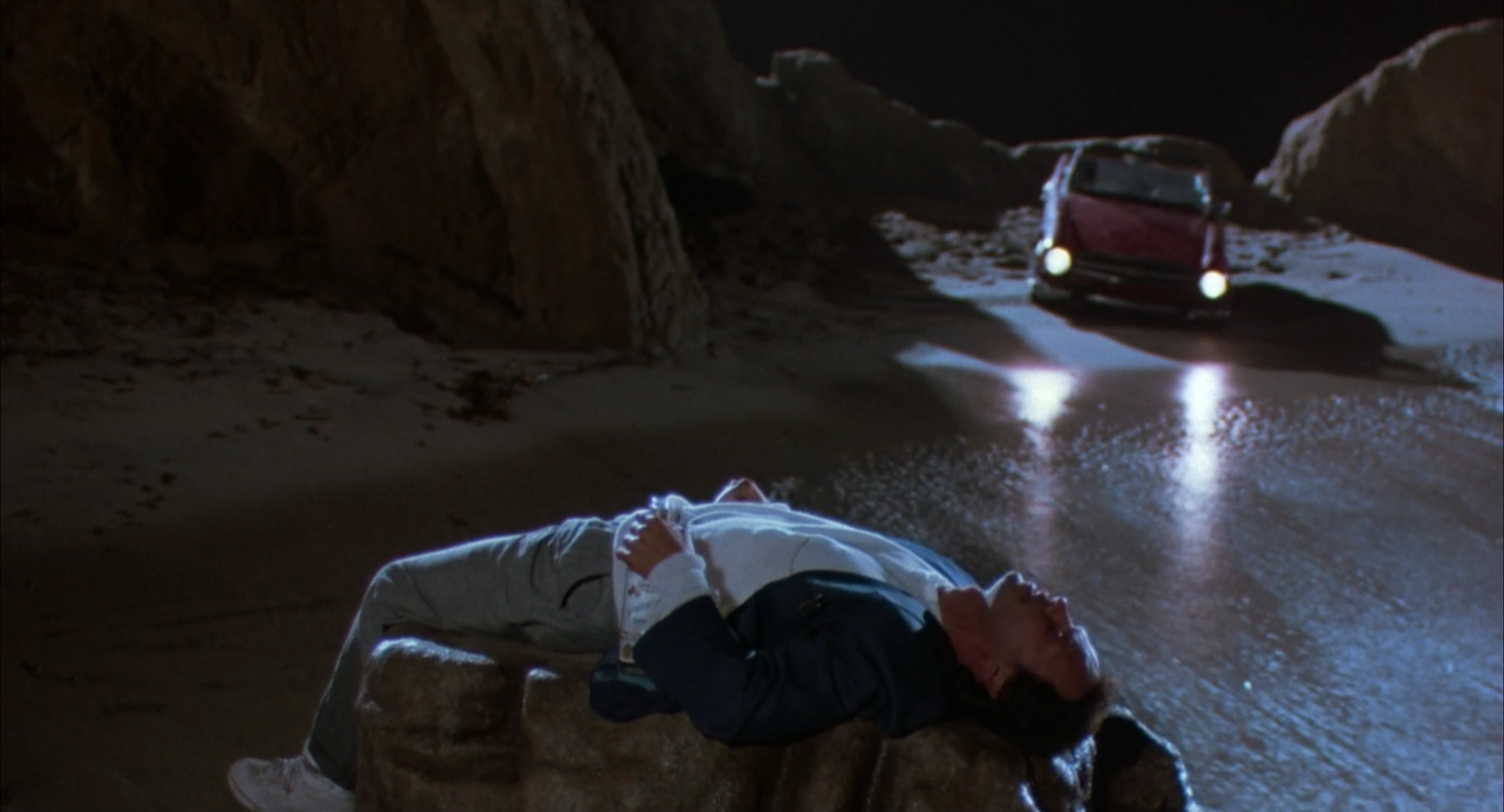
In the novel, Highsmith’s the main characters are refracted and reflected off of each other, her thematic interest is in how Guy resembles Bruno, how the criminal mind lurks inside even the most seemingly sane citizens. Guy drives himself to undertake Bruno’s plot as much as he is driven to it by Bruno: there’s something inside of him that appears rational to neutral observers but is entirely deranged. Larry Donner’s deranged qualities are more apparent but the distance his character must travel to accepting his role as a murderer doesn’t feel any shorter.
Of course, Momma can’t resist a host of Hollywoodifications of the story: Larry and Owen really do end up as friends. The detested ex-wife doesn’t end up dead, Larry doesn’t become a murderer, even Momma gets remembered fondly in the epilogue that finds Owen & Larry (and Larry’s stone angel) lounging on the beach, bestselling authors and bestest of buds. The film can’t resist the idea that its complicated domestic conflict can be happily resolved, that people who don’t love us back will someday find the capacity to do so, that our dark thoughts will leave us, that murderous fantasies are fleeting, that even the least promising of students have a bestseller lurking within them.
A comparison of its own toothless ending only illustrates the shallowness of Hitchcock’s fluff: its resolution8 is just as blandly predictable, this time predicated on the idea that a bad guy will get his just deserts and that will be that. Everything unsettling about both Bruno and Guy can be resolved without complication. But there’s nothing in Hitchcock’s Strangers on a Train as impactful Momma embracing Owen and kissing him lovingly seconds after he imagined ramming scissors through her head. Despite the sitcom one-liners, the slapstick comedy, the crowd-pleasing silliness, the there is something more human and true about Throw Momma from the Train than can be found in the sleek emptiness of Hitchcock’s film. It might’ve been worth the time for Highsmith to take a trip to the theater to see it.
~ JUNE 16, 2021 ~
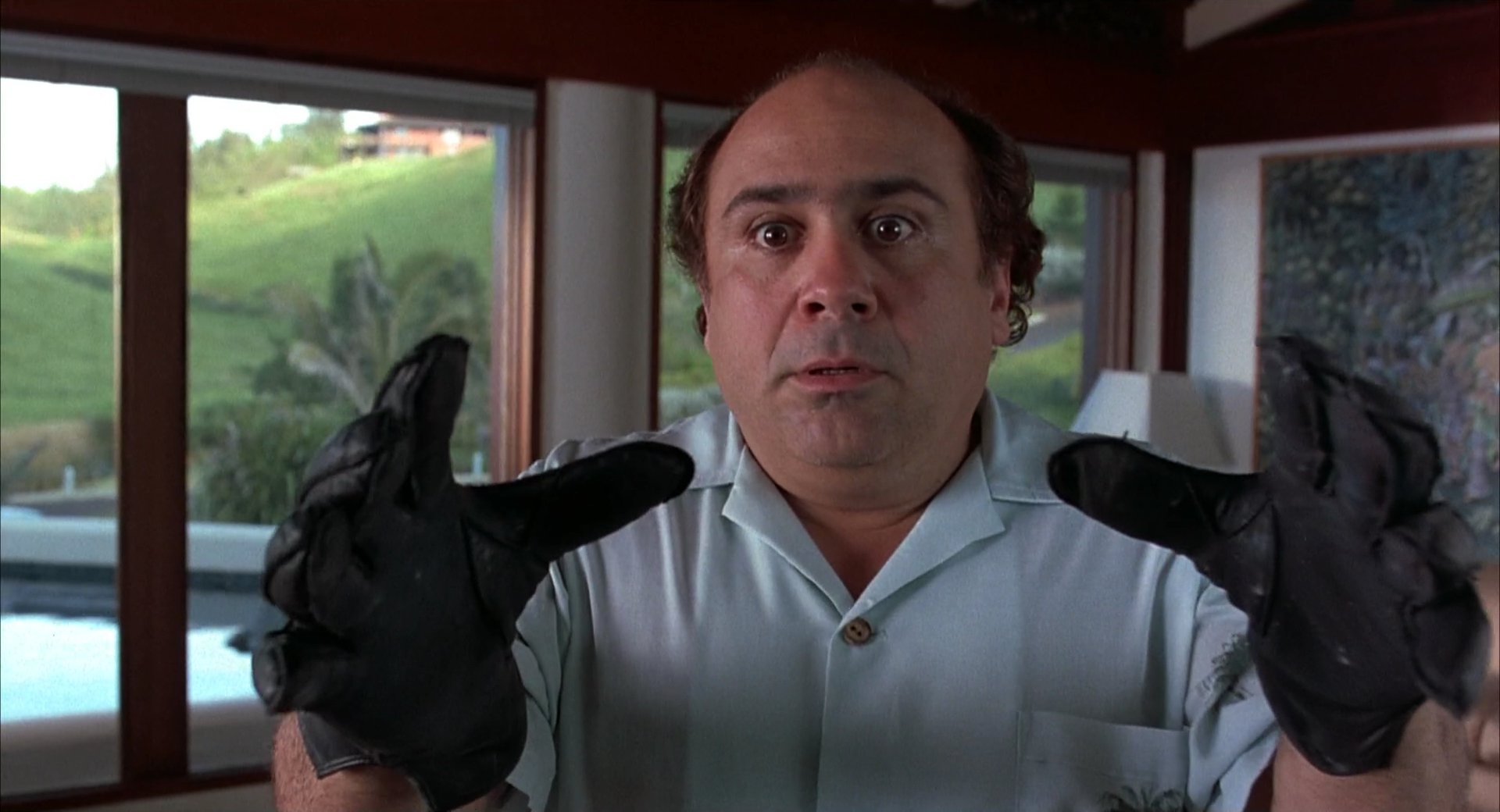
* This is your opportunity to tweet something coolly dismissive of the very concept! Do it! You’ll be an internet hero for your noble defense of the much-maligned Alfred Hitchcock! Take this bold stance now - sneer, snark and shrug in a gesture of dismissive superiority! "People write some crazy stuff on the internet," you'll tweet and you'll put a little whattayagunnado emoji next to it and everyone will think "Well there's a guy who knows movies. Not like those guys who think Topaz and Suspicion are terrible." I just hope someone out there has the courage, integrity and intelligence to take this stance. Our willfully provocatively iconoclasm would be empty without an establishment orthodoxy to stick it to!
Or just, like, accept that not everyone likes the exact same movies that you do. It happens. Also, I really wanted to write "Sure, you'll blanche like the sluttiest Golden Girl at the suggestion," but Cribbs pointed out this series already isn't doing the site any favors even without a truly moronic Golden Girls joke in the intro. The fact of the matter is, we know our opinion on Hitchcock will be unpopular and we'd just like to move past it. If you think our assessment of The Master of Homophobia (that was his nickname, right?) is indefensible, just know we have no desire to defend it.
1 It doesn’t come up in this 1988 interview that goes extensively into the film adaptations of her work, including deep cuts like the West German version of Edith’s Diary.
2 Crystal’s Jodie Dallas character, despite being the first out homosexual on a network show, was met with protests from GLBT activists due to its faintly clueless depiction of homosexuality.
3 We’ll get into comparisons between Momma and Highsmith’s novel later, but the film’s enthusiasm for making fun of bad writing is tune with the same things which Highsmith held in contempt. When Owen explains his story as “The guy in the hat killed the other guy in the hat” it’s not hard to see the film lampooning mystery writing in a way analogous to Highsmith’s contempt for standard crime fiction. (A lot of Hitchcock films could be reduced to those kind of terms with very little characterization being boiled off. It’d be perfectly fair to describe Cary Grant in North by Northwest or Notorious as “the guy in the suit” and not much else.)
4 The reactionary perspective on evil tends to be deeply hypocritical to the degree that the liberal-humanist perspective on evil is naive.
5 Highsmith consistently denied that Tom Ripley was in any way gay and while that’s true of the terrible sequels in which he has a wife, it doesn’t make any sense in the context of the brilliant original novel where the story is driven by Ripley’s obsession with the handsome, rich layabout Dickie Greenleaf (and his loathing for the woman who comes between them.)
6 Imagine how stupid you have to be to ask this question! To believe that the filmmaker who created Maria Braun, Petra von Kant, Martha, Mother Kusters, Veronika Voss and Emmi Kurowski makes movies to express his disgust and antipathy for women!
7 For brevity’s sake, I’m not really going to get into the fact that Hitchcock’s heroes aren’t usually Good Guys per se: generally, they’re righteous in the sense that they are regular people beset by an almost cosmic injustice and forced to react (plagued by false accusations, pursued by True Villains, thrust into a dangerous situation beyond their control/understanding) rather than naturally heroic figures. Generally, they're not the do-gooders who run into a burning building to save a baby/puppy but people who find themselves in a building suddenly on fire (metaphorically.)
8 Every time I get to the last half hour of this film, I’m incredulous. I can’t believe people enjoy this shit! The plot hinges on Bruno trying to fish a lighter out of the sewer by doing nothing more than reaching reeeeaaaaalllyyy hard for it (for what feels like 10 minutes) and then the final climax is built around a truly decrepit old man (who has nothing to do with the story) crawling very. slowly. under a carousel. “Skim milk” is too kind.
















